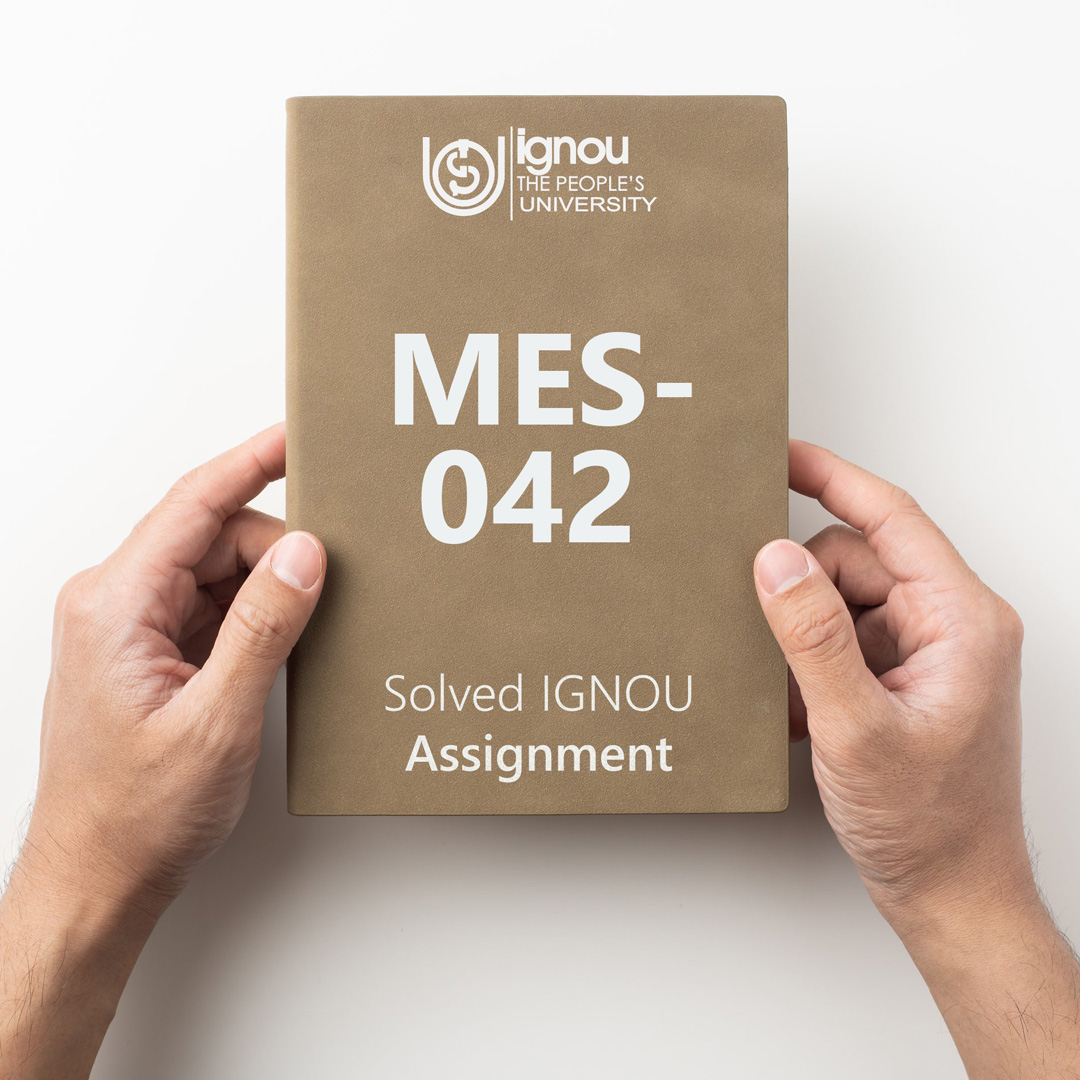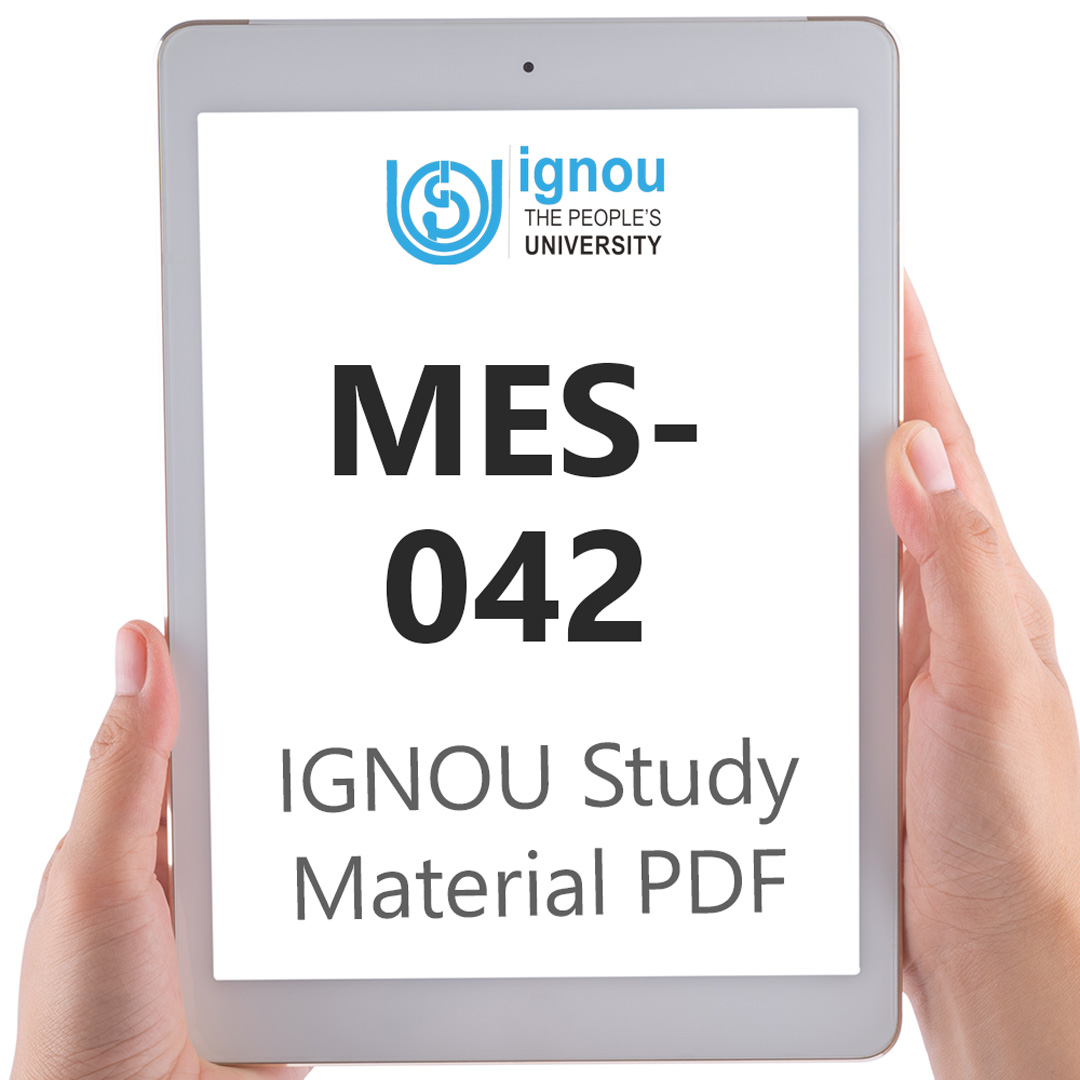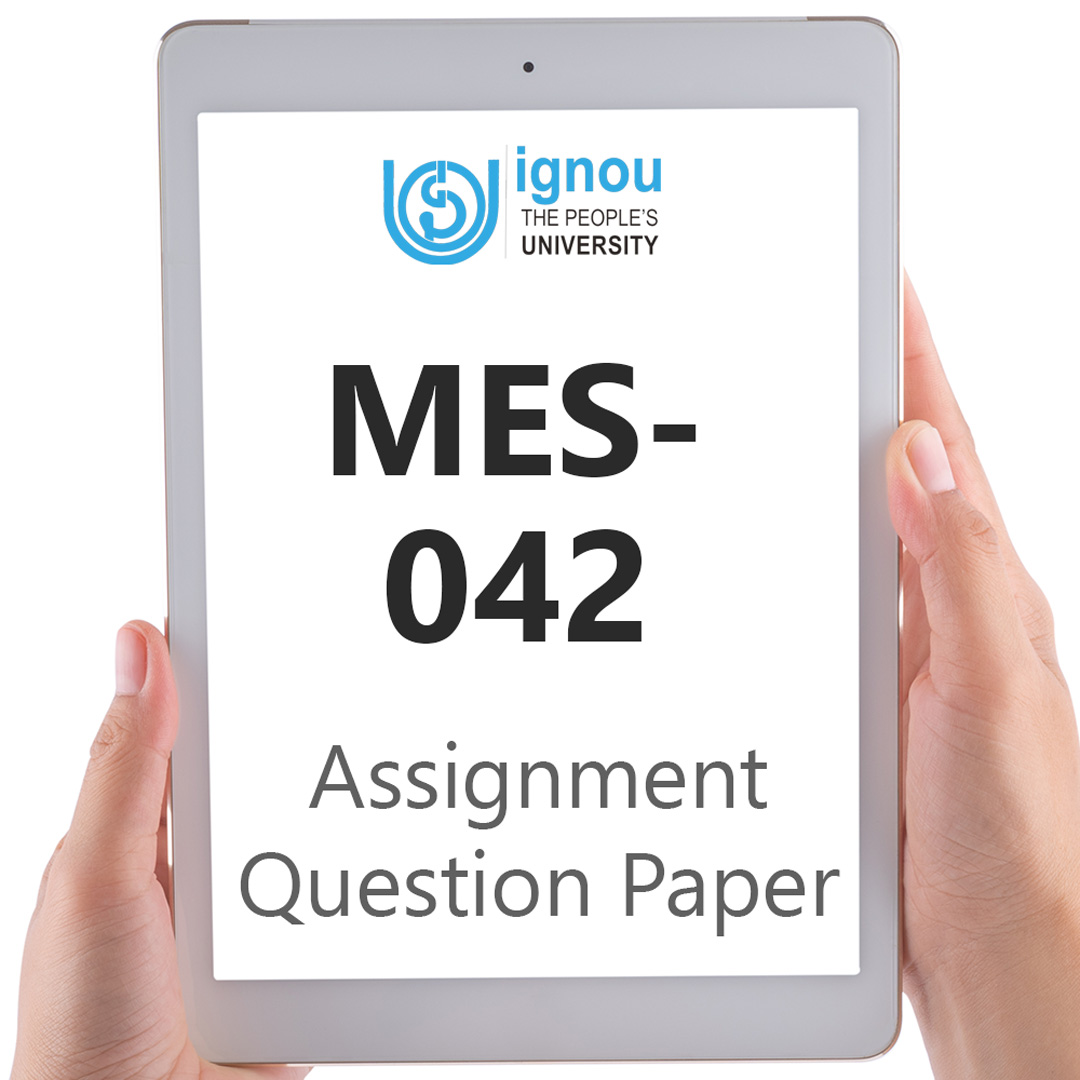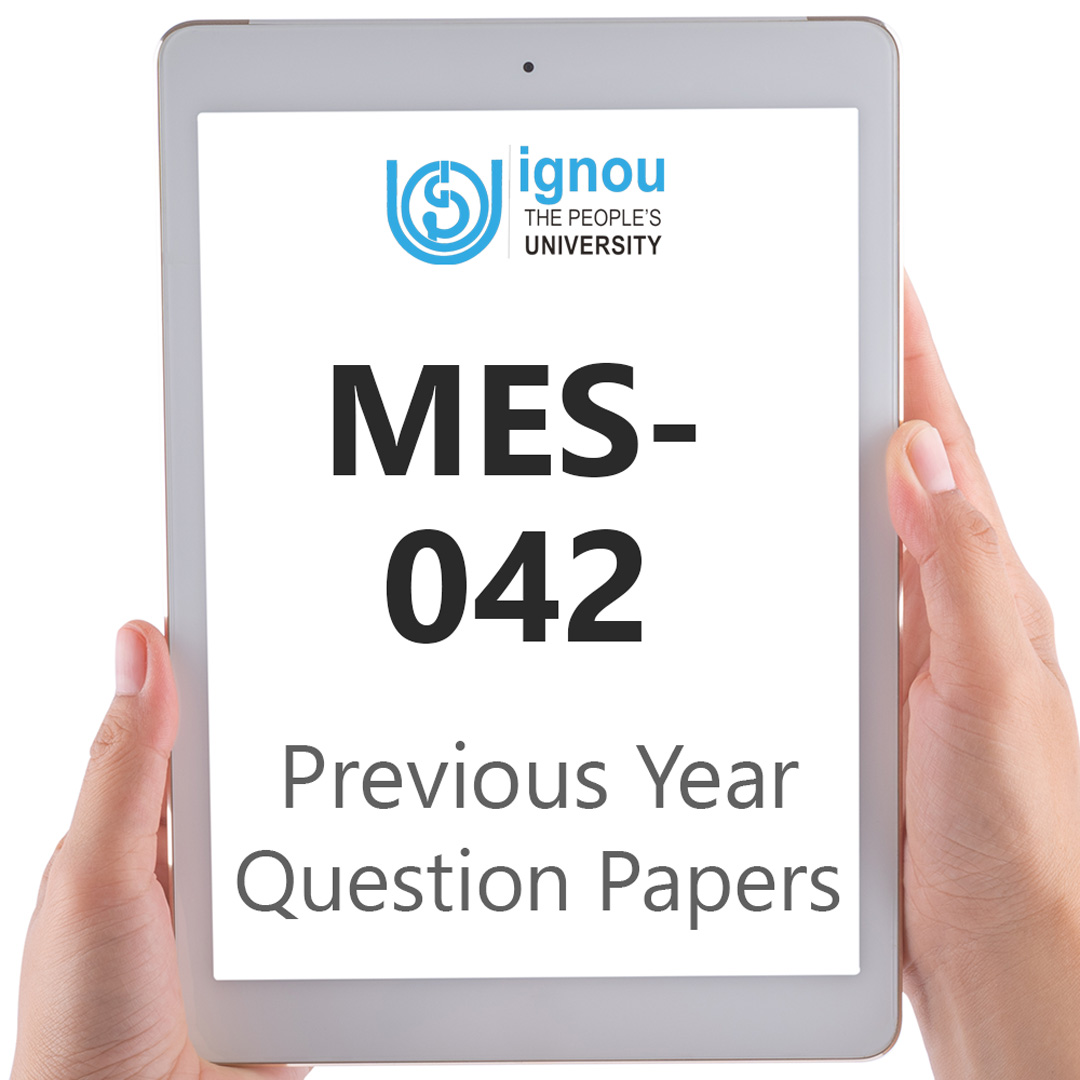If you are looking for MES-042 IGNOU Solved Assignment solution for the subject Dimensions of Educational Management, you have come to the right place. MES-042 solution on this page applies to 2023 session students studying in MAEDU, PGDEMA courses of IGNOU.
MES-042 Solved Assignment Solution by Gyaniversity
Assignment Code: MES-042/TMA/2023
Course Code: MES-042
Assignment Name: Dimensions of Educational Management
Year: 2023
Verification Status: Verified by Professor
a) Explain briefly role of any two national level institutions and organisations from the following: (500 words)
b. National Open School
Ans) The Government of India founded the National Institute of Open Schooling (NIOS), formerly known as the National Open School, in 1989. NIOS is an independent institution that was once known as the National Open School. Students who are unable to attend traditional schools due to various reasons such as distance, disability, or other restraints can receive an education that is flexible and easy to access through this organisation, which is its principal mission. The NIOS plays an important role in the Indian education system, with some of its key functions including:
Creating academic programmes and making them available at the senior secondary and secondary levels, both online and through traditional classroom settings.
The creation and provision of vocational programmes, with the goal of assisting students in the acquisition of skills and the preparation for employment prospects.
Increasing possibilities for lifelong learning and improving existing skills through a variety of educational programmes.
Carrying out examinations and announcing the results for the many courses that the institute has to offer.
Promoting open education and learning at a distance across the nation through cooperative efforts with other organisations.
The NIOS also focuses on inclusive education and provides special provisions for students with disabilities, inmates of prisons, and children from marginalized communities. Overall, the NIOS plays a crucial role in providing access to education for those who are unable to attend regular schools and promoting lifelong learning and skill development opportunities for all.
c. Central Board of Secondary Examination
Ans) The Central Board of Secondary Education (also known as CBSE) is a national board of education in India that is responsible for administering final exams to students who are enrolled in Classes 10 and 12 at CBSE-affiliated schools in India as well as other countries across the world. The CBSE plays an important role in the Indian education system, with some of its key functions including:
Creating new curricular and instructional guidelines for various levels of education, as well as keeping existing ones up to date.
Examinations at the national level for students in grades 10 and 12 are being held, and the results of those examinations are being announced.
granting schools affiliation and controlling how they operate in compliance with predetermined principles and criteria in order to provide quality education.
Creating and publishing textbooks as well as other forms of educational material for educational institutions that are associated with the board.
In order to enhance the level of education offered in schools that are connected with the CBSE, it is necessary to run programmes for the training and development of teachers.
The Central Board of Secondary Education is also responsible for supporting educational practises that are creative and based on research, for promoting the use of technology in teaching and learning, and for guaranteeing an educational approach that is student-cantered and inclusive. In general, the Central Board of Secondary Education (CBSE) plays a significant part in determining the educational requirements that must be met in India. It also plays a significant role in ensuring that students receive an education that is of the highest possible calibre and that is both thorough and all-encompassing.
b) Briefly discuss the role of central and state government in implementing educational schemes during 2012 to 2018. (500 words)
Ans) Between the years of 2012 and 2018, the governments of India at both the central and state levels carried out a number of educational projects with the objectives of raising the general level of education as well as increasing the number of individuals who have access to opportunities for education. The central government launched several schemes during this period, including:
Sarva Shiksha Abhiyan (SSA): This programme was established in 2001 with the goal of making education both free and mandatory for all children from 6 to 14 years old in the United Kingdom. The programme was maintained and expanded during the years 2012-2018 with the goals of broadening access to educational opportunities and elevating the standard of instruction in public schools.
Rashtriya Madhyamik Shiksha Abhiyan (RMSA): This programme was started in 2009 with the intention of expanding students' opportunities to continue their education in secondary schools that are run by the government. The programme was continued and expanded between the years 2012-2018 in order to improve the infrastructure of schools, provide vocational education, and raise the number of females enrolled in secondary schools.
National Skill Development Mission (NSDM): The year 2015 marked the beginning of this mission, which aims to improve the employability of young people by providing them with training in the development of their skills and making them available for work in a variety of economic fields. This mission was launched with the intention of improving the employability of young people by providing them with training in the development of their skills.
The state governments also implemented various educational schemes during this period, including:
Mid-day Meal Scheme: Free breakfasts, lunches, and snacks are being provided to students attending government schools across the majority of states as part of a programme that has the overarching objective of raising school enrolment and attendance rates.
Free Textbook Scheme: A number of states have implemented programmes that provide free textbooks to students up through the secondary level in an effort to ease some of the financial strain that is placed on families and to broaden the opportunities that students have to receive an education. This is being done in an effort to accomplish both of these goals.
State-specific Schemes: A number of states have also initiated state-specific programmes in an effort to raise the standard of education and broaden access to it. These programmes have included the distribution of bicycles to students in rural areas in an effort to cut down on the number of students who drop out of school and the awarding of scholarships to students from economically disadvantaged sections who have demonstrated academic excellence.
Both an improvement in access to education and an improvement in the quality of that education were primary goals of the many different educational initiatives that were put into action between the years of 2012 and 2018 in order to achieve the overall objective of improving overall education. The implementation of these programmes required significant contributions from both the federal government and the governments of the individual states.
b) As a school principal of a primary school, suggest a plan to include community members to improve girl’s enrolment in your school. (500 words)
Ans) The following is a suggestion for how we might include people of the community in an effort to increase the number of girls who enrol in our school
Identify Key Community Leaders: The first thing that has to be done is to compile a list of the significant people who are a part of the community in the immediate vicinity. People who hold political roles at the local level, major religious figures, and other powerful members of the community should be included in this group.
Organize a Community Meeting: Hold a meeting for the community in which the goals of the school and the importance of girls receiving an education are both topics of discussion. Involve the prominent members of the community and ask for their support and input. Encourage them to share the information with other people and to get parents to sign their girls up for school.
Create a Community Outreach Program: Develop a community outreach programme with the intention of elevating the educational attainment level of the local females living in the surrounding areas. Going door-to-door, conducting rallies to promote awareness, and holding instructional workshops for parents are all examples of activities that could fall under this category.
Engage Parents: Meetings should be held between the teachers and the parents, and the parents should be encouraged to participate in the various activities that take place at the school. Explain to them the importance of education and how it can help their daughters achieve their goals and have a positive impact on the community in which they reside as well as other communities around the world.
Encourage Girl Child Participation: Encourage the participation of female children in educational activities by creating a healthy and secure atmosphere in which they can learn. Provide separate bathrooms and offer sufficient hygiene amenities. Give academic scholarships, incentives, and recognition to girls who have achieved a high level of success in school.
Partner with NGOs and Other Organizations: Collaborate with nongovernmental organisations (NGOs) and other groups that are working toward the education of girls. Work with them to host events and workshops that encourage the education of young women and provide assistance to them while they go through the enrolling process.
Monitor Progress: Your key priorities should be to conduct thorough and consistent analysis of the results of the community engagement programme and to monitor the progress of the campaign on a regular basis. Analyse the amount of young women who are currently enrolled in school and determine the level of academic success that they have achieved.
If we involve people of the community and cultivate an environment that encourages collaboration, we will be able to raise the number of students enrolled in elementary schools, as well as advance the cause of education for young women. If we make education accessible and welcome for everyone, we can give young women the tools they need to fulfil their full potential and contribute to the progress of the communities in which they reside. This, in turn, will help those communities grow.






